Relativity Space Adds $500 Million to ‘War Chest’ for Scaling Production of 3D-Printed Rockets
Relativity Space wants to use enormous 3D-printers to revolutionize the way rockets are built – and CEO Tim Ellis told CNBC that the company now has a “war chest” of capital to do so.
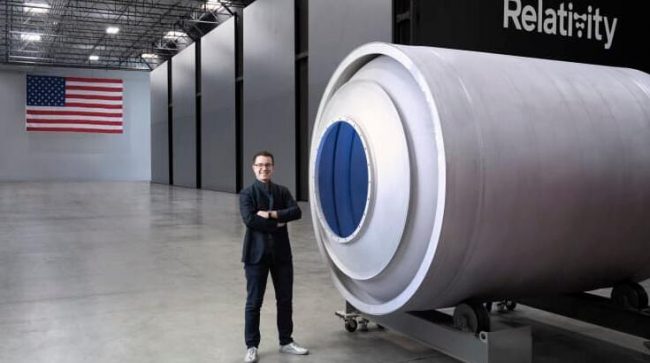 Relativity Space
Relativity Space
“We’re excited to announce a $500 million Series D funding round at a valuation above $2 billion from top tier blue chip investors,” Ellis said.
Tiger Global Management led the round, which was joined by fellow new Relativity investors Fidelity, Baillie Gifford, ICONIQ Capital, General Catalyst, XN Capital, Senator Investment Group and Elad Gil. Additionally, existing Relativity shareholders Bond Capital, Tribe Capital, K5 Global, 3L Capital, Playground Global, Allen & Company, Mark Cuban and Spencer Rascoff also participated in the round.
Relativity’s valuation climbed to $2.3 billion after this round, CNBC reported last week. That makes Relativity the second most valuable private space company in the world after SpaceX, according to Pitchbook. Notably, Pitchbook’s ranking does not include space venture Blue Origin, which is solely funded by Jeff Bezos.
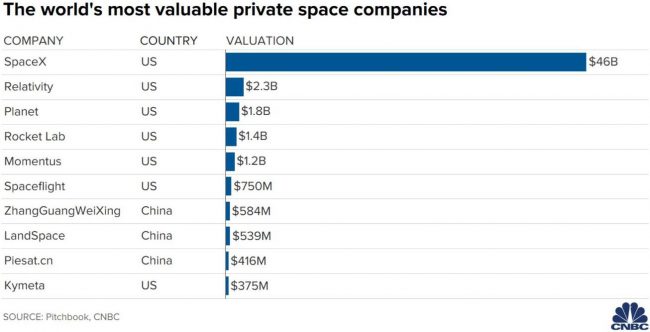
“This really accelerates Relativity’s momentum and scaling as we focus beyond first launch on production and various infrastructure expansion projects,” Ellis said. “Other exciting new initiatives are underway – which we can discuss further next year – with this capital … but we’re not in the business of taking smaller swings in terms of where we think the technology can go.”
Relativity is focused on building the first iteration of its Terran 1 rocket, which has 95% of its parts made using “the world’s largest 3D-printers” that the company developed in-house. Ellis emphasizes that 3D-printing essentially the entire rocket allows them to be less complex and faster to build or modify, compared to traditional rockets – which may only use 3D-printed parts for a few components. Additionally, Relativity says its simpler process will eventually be capable of turning raw material into a rocket on the launchpad in under 60 days.
Terran 1 is priced at $12 million per launch and is designed to carry 1,250 kilograms to low Earth orbit. That puts Terran 1 in the middle of the U.S. launch market, in between Rocket Lab’s Electron and SpaceX’s Falcon 9 in both price and capability.
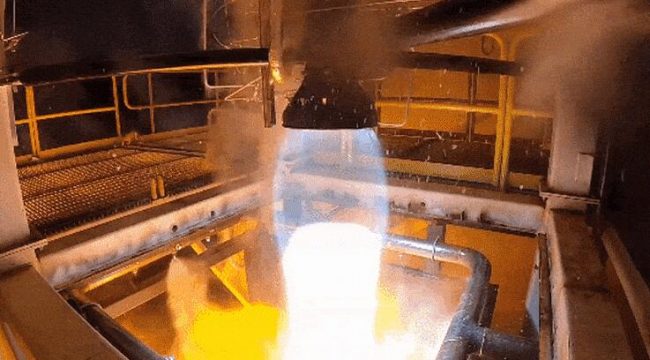 Tests of the Aeon 1 rocket engine. Relativity Space
Tests of the Aeon 1 rocket engine. Relativity Space
While Relativity’s first Terran 1 launch is not until later next year, the company has made significant advances in developing and verifying that its 3D-printing approach works for building a rocket. A series of pressurization tests showed that the materials were strong enough for launch and Relativity recently completed a full duration test firing of its Aeon 1 engine. Nine of the engines will power the Terran 1 rocket.
The company also moved into its new Long Beach, California headquarters this summer – a 120,000 square foot facility that will serve as the foundation of its manufacturing and launch business. The new facility allows Relativity’s third generation “Stargate” 3D-printers to manufacture a single piece of metal up to 32 feet tall.
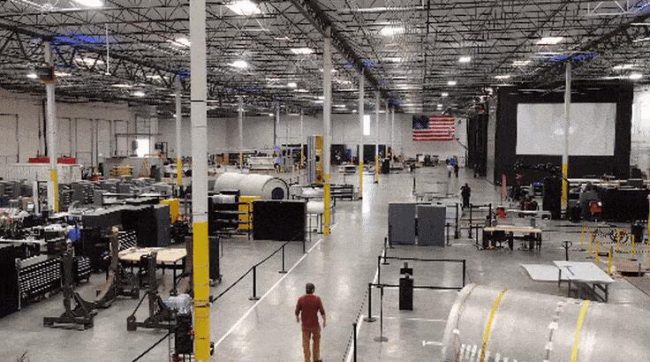 The factory floor of Relativity’s new headquarters in Long Beach, California.Relativity Space
The factory floor of Relativity’s new headquarters in Long Beach, California.Relativity Space
Relativity is building out its footprint in other parts of the U.S. as well, with engine test stands at NASA’s Stennis Space Center in Mississippi and launchpads at the U.S. Air Force’s Cape Canaveral in Florida and Vandenberg in California.
“This is really just the start of a 10-year vision of how we’re going to disrupt this industry,” Ellis said.
Why Relativity raised now
The company was “not initially planning to raise” new capital right now, Ellis said. Relativity still has the majority of its funding from the $140 million it raised in October 2019, which funded the company’s Terran 1 rocket development through its first launch – a fact Ellis emphasized remains true today. Rather, Ellis realized Relativity could bring new funding that will allow the company to “sink our teeth in and accelerate” the work it’s begun.
 The company’s “Stargate” 3D-printers.Relativity Space
The company’s “Stargate” 3D-printers.Relativity Space
Ellis also said that taking Relativity public through a SPAC deal was “certainly a possibility,” but staying private “was the preferred direction by a longshot.” SPACs, or special purpose acquisition companies, have become an increasingly popular way method of going public as an alternative to the traditional IPO market. But seeking private capital “was a conscious choice” that Relativity made.
“It lets us put our heads down and execute and not have to worry about some of the overhead of being a public company today,” Ellis said. “We achieved that handily and are really humbled by the level of interest from these world class investors.”
Two of Relativity’s new major shareholders – Fidelity and Baillie Gifford – have invested in the space industry before, as both firms previously took stakes in SpaceX. Ellis argued that “Relativity is the first venture-backed company since SpaceX to have this class of investor” behind it.
“These firms really have a track record of investing in some of the most prestigious and iconic startups in the world across all industries,” Ellis said. “Relativity is at the forefront of an inevitable shift toward software-defined manufacturing and the unique approach to 3D-printing we’re taking is really … an automation technology that transforms the entire value chain around building a rocket.”
The company has continued to hire quickly this year, Ellis noted, and now has more than 230 employees.
Relativity’s Mars goal
 This vista of the Endeavour Crater rim was acquired by NASA’s Mars Exploration Rover Opportunity from the southern end of “Murray Ridge” on the western rim of the crater. Source: NASA
This vista of the Endeavour Crater rim was acquired by NASA’s Mars Exploration Rover Opportunity from the southern end of “Murray Ridge” on the western rim of the crater. Source: NASA
As the company nears its first launch, Ellis described Relativity’s “long term vision of building humanity’s infrastructure on Mars” as its guiding principle.
“We want to lead and work on building humanity’s industrial base on Mars,” Ellis said. “That really stems from the 3D-printing technology, which which we can actually start [delivering to Mars] by launching smaller pieces.”
His goal is similar to Elon Musk’s with SpaceX, although Relativity isn’t focused on launching people. Instead, Ellis sees Relativity helping build on Mars by initially sending a small 3D-printer for “the first object manufactured on another planet by humanity,” which is “the future that we’re going towards.”
“I think it will be possible in less than 10 years, maybe even much faster,” Ellis said.
Ellis said he is “very much cheering on” SpaceX’s work to develop its next-generation Starship rocket, which Musk’s company wants to use to carry as many as 100 people at a time to Mars. Relativity could “maybe even by a customer of Starship and fly our 3D-printers to Mars,” Ellis added.
“I want to inspire dozens to hundreds of companies to work on the mission of making humanity multiplanetary and expanding the possibilities for human experience, both on Earth and on Mars,” Ellis said. “I’m hoping Relativity’s continued success inspires and emboldens more entrepreneurs to found companies that have both very lucrative near-term business opportunities, but also can build towards building a sustainable society on Mars.
Source: CNBC



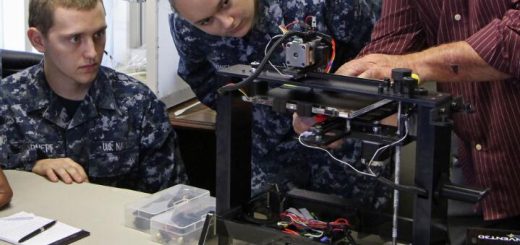
Recent Comments